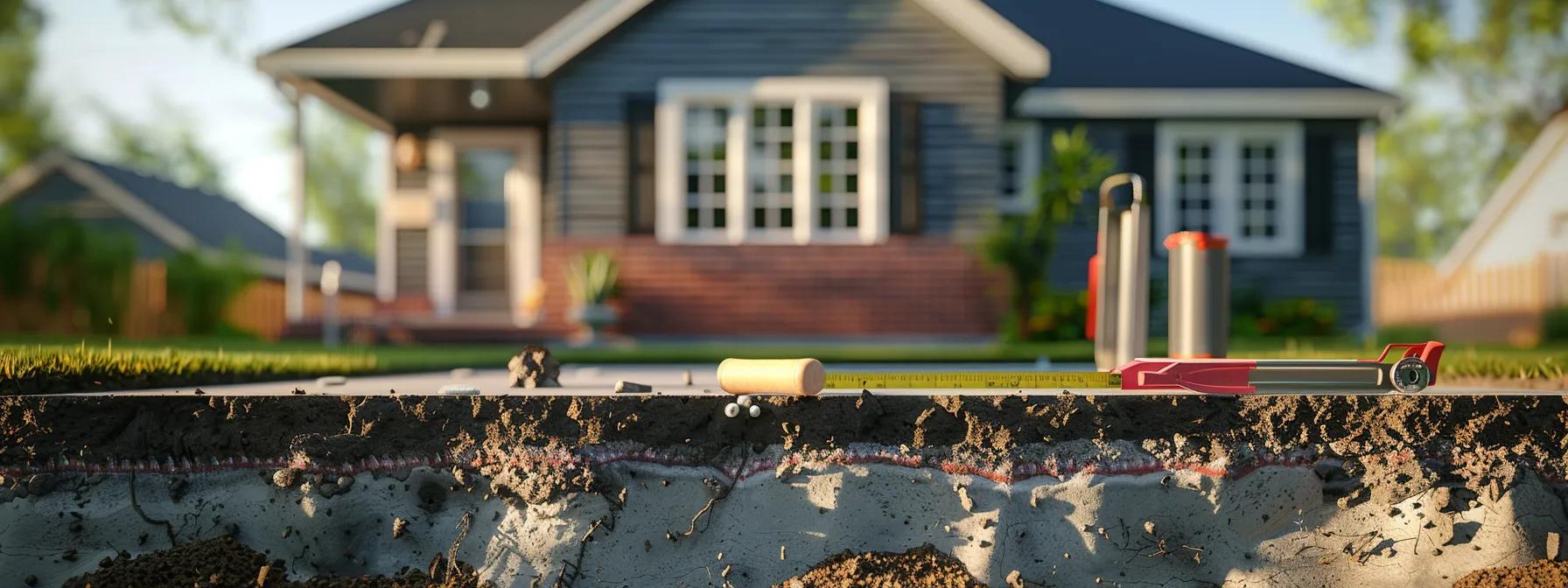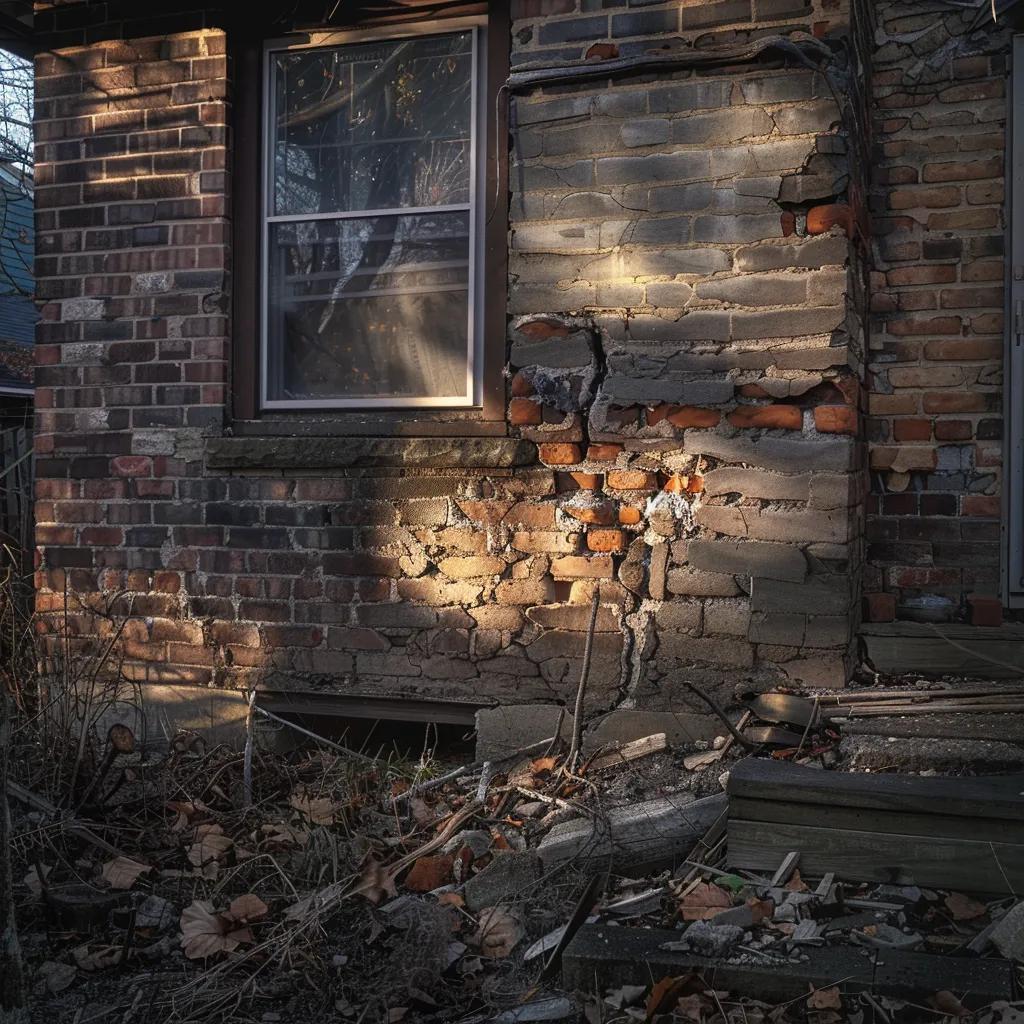Home Size and Age Effects on Foundation Repair Costs: What Every Homeowner Should Know
Foundation repair pricing is influenced by a wide variety of factors. Homeowners often ask: how do home size and age affect foundation repair costs? This article provides a comprehensive look at how a home’s size and age can impact repair expenses. Using data, industry standards, and case studies, the sections below explain how larger properties require more materials, how older structures face unique issues, and why financial plans should be adjusted according to the home profile. Key cost components such as square footage, labor, and accessibility challenges are discussed, along with strategies for obtaining accurate estimates and planning long-term financial maintenance for your foundation. By understanding these critical aspects, homeowners can approach foundation repair knowledgeably and avoid unexpected expense spikes.
How Home Size and Square Footage Affect Foundation Repair CostsFoundation Repair Pricing
Home size plays a crucial role in determining foundation repair costs. Larger properties generally require more extensive repairs due to increased area and higher material usage, while smaller homes may face concentrated issues in limited spaces.
Calculating Repair Expenses for Larger Properties
For large homes, estimating repair expenses begins with calculating the square footage. A broader foundation increases exposure to soilpressure and potential movement. Consequently, more repair materials, extra labor hours, and specialized equipment are needed for issues like foundation crack repair or soil compaction. For example, if a home exceeds 3,000 square feet, additional piers or underpinning may be necessary. Industry data suggests that every added 500 square feet can boost labor and material costs by 10–15%, making precise measurements and tailored repair approaches vital.
Foundation Repair Pricing Considerations for Smaller Homes
Smaller homes, while having less overall area, often present challenges such as accessing cramped or hard-to-reach foundations. Although total costs may be lower, the price per square foot can be higher since contractors sometimes charge premium rates when working in confined areas. Even a minor imperfection in a small home can lead to significant structural concerns, requiring detailed analysis and more careful repair work.
The Connection Between Square Footage and Material Requirements
Square footage directly determines the amount of construction materials required. Larger areas need more concrete, rebar, and waterproofing membranes. For instance, a home with expansive claysoil might require both foundation crack repair and extra grout to fill voids, increasing material use. In a 4,000 square foot property, material costs might make up as much as 40% of the total repair expenditure, while smaller homes require less material but demand high precision in application.
Labor Cost Adjustments Based on Home Size
Labor costs increase with the size of a home because larger foundations require longer repair schedules and more extensive crew work. For example, underpinning or installing additional piers on large foundations may need multiple crews over several days, raising labor costs. Conversely, smaller properties, though needing less total labor, can incur higher hourly rates due to the difficulties of working in tight, cramped spaces.
Accessibility Challenges in Variously Sized Structures
Accessibility can differ greatly between large and small homes. In larger properties, while there may be several entry points, the spread-out nature of the foundation means that equipment, materials, and crews must traverse greater distances, which can slow progress. In smaller or older homes, issues such as limited parking or cramped workspaces can complicate the placement of heavy machinery and extend repair times.
The Role of Property Age in Determining Foundation Repair Expenditures
The age of a property significantly affects foundation repair costs because of changes in construction standards, material degradation, and evolving building codes. Older homes might require extensive retrofitting to meet modern standards, while newer constructions face issues due to material fatigue or soil interaction.
Common Foundation Issues in Older Buildings and Their Repair Costs
Older buildings often show signs of settling, outdated construction techniques, and material deterioration. Historic homes, for example, may suffer from degraded mortar, rusted rebar, or shifting soil conditions that result in significant cracks. Correcting these issues usually involves specialized solutions like epoxy crack repair and advanced waterproofing. Because preserving the original character while ensuring structural integrity is challenging, repair costs for historic homes built before 1950 can be 25–35% higher than those for newer constructions.
Foundation Repair Needs for Newer Constructions
Newer homes are not immune to foundation issues but generally benefit from modern construction materials and techniques. Problems such as expansive claysoil or minor settlement issues can occur, yet improved initial quality often results in lower overall repair costs. However, it is still important to diagnose and address emerging cracks or leaks quickly to prevent further damage, especially in concrete block foundations. Warranties and regular inspections offered by foundation repaircontractors can help mitigate escalating costs.
How Building Material Deterioration Over Time Affects Pricing
Over time, even quality materials degrade. In older homes, concrete, rebar, and mortar weaken because of environmental factors like moisture, freeze-thaw cycles, or prolonged exposure to elements. These conditions may necessitate concrete leveling or the injection of sealants, interventions that add to repair costs. In contrast, newer building materials tend to last longer but might still require preventive treatments to extend their durability.
Repair Cost Differences Between Historic and Modern Foundations
Historic foundations require careful handling to preserve a home’s character while incorporating modern structural reinforcements. This balance often increases labor costs because specialized repair techniques are necessary. On the other hand, modern foundations usually use reinforced concrete and standardized engineering practices, leading to less custom work. As a result, historic foundation rehabilitation projects can sometimes cost up to 40% more than repairs on newer foundations.
Upgrading Older Foundations to Current Standards and Associated Costs
Many homeowners with older properties opt to upgrade their foundations to meet current seismic and safety standards. Upgrades may include new drainage systems, improved waterproofing, and additional piers or piles to better distribute weight. Although these upgrades add initial expense, they often lower long-term maintenance and repair costs by preventing future damage. Depending on the extent of the work, such upgrades can increase costs by 20–50%.
How Foundation Repair Pricing Differs Based on Home Size and Age Combined
When combining the influences of home size and age, additional factors further affect foundation repair pricing. Large, older homes tend to face compounded challenges, while small, newer homes experience more focused issues.
Assessing Repair Costs for Large, Older Residences
Large, older residences typically require extensive repair work. These properties may need multiple types of interventions, including underpinning, crack repair, and comprehensive waterproofing. For instance, a 5,000 square foot home from the 1920s might need a complete re-evaluation of its foundation, replacement of weakened concrete blocks, and reinforcement with modern materials. Detailed cost analyses often indicate that such repairs can exceed $20,000 due to the scale and complexity of the work.
Repair Pricing Structures for Small, Newer Houses
Small, newer houses often have foundations built with modern methods that avoid many typical structural issues. However, they can still develop minor settling or localized cracks. Repair costs for these homes are generally lower, ranging from $3,000 to $8,000, but the cost per square foot might be elevated because the repair work is concentrated in a limited area. Additionally, local labor rates and site accessibility can influence the final price.
Unique Cost Factors for Large, Newer Dwellings
Large, newer dwellings, despite being constructed with modern technology, can face unique challenges simply due to their size. Even small issues can add up when spread over a vast area. For instance, extensive drainage systems and soil stabilization measures may be necessary in large properties located in flood-prone or expansive clay areas. These projects might even require some architectural modifications, further driving up repair budgets.
Financial Considerations for Small, Aged Property Foundations
Small homes with aged foundations often involve lower total repair costs but may see higher expenses per square foot. Such properties might require targeted interventions like localized crack repair, minor underpinning, or installation of a sump pump to combat water leakage. Although overall spending might be lower, ensuring that repairs are sustainable is critical to avoid recurring expenses.
Comparing Repair Estimates Across Different Home Profiles
Homeowners need to assess repair estimates not solely by total cost but also by the effectiveness and longevity of the proposed repairs. In large, older homes, a higher upfront cost may yield a durable, comprehensive solution that minimizes future maintenance expenses. In contrast, small, newer homes can often be treated with targeted repairs that produce quick results. The table below provides a snapshot comparison:
Key Cost Components in Foundation Repair Sensitive to Home Characteristics
Several core components drive foundation repair costs, and these factors vary with the characteristics of a home. Important components include material choices, labor intensity, and site-related challenges.
Piering and Piling System Costs Related to House Scale
Installing piers or piles is a common method to stabilize shifting foundations. The cost of these systems is strongly related to the size of the home. Larger foundations require more support points and sometimes multiple rows of piers, while smaller homes need fewer. Material costs, whether for steel piers or concrete piles, may account for 20–30% of the overall repair budget. Additionally, access to the site and the local soil type can complicate installations and influence final pricing.
Expense of Crack Repair and Sealing Varying With Structure Age
Crack repair is a frequent necessity, especially in older homes where deterioration is common. The costs depend on the number, size, and location of cracks. Older structures might demand extensive repair using epoxy injections or polyurethane foams to seal deeper cracks. Typically, crack repair accounts for 10–20% of the total repair cost, varying with crack severity and the type of foundation.
Waterproofing and Drainage Solution Pricing Influenced by Home Footprint
Waterproofing and drainage work protects the foundation from moisture and soil saturation. Larger homes require more extensive exterior waterproofing measures, longer lengths of drain tile, or complex grading solutions. In areas with high water tables or expansive clay soils, additional materials such as sump pumps or advanced drainage membranes may be needed. Such measures can consume up to 25% of the overall repair budget.
Soil Stabilization Costs and Their Link to Property Age and Size
Soil stabilization is necessary when settling or erosion undermines a foundation’s integrity. The cost for stabilization, which might involve chemical grouts, soil replacement, or compaction techniques, depends on both the home’s age and its square footage. Older homes on problematic soils may need intensive stabilization, while large, new homes on expansive clay may require moisture barriers and enhanced drainage. These costs can increase overall repair expenses by 15–25%.
The Price of Addressing Tree Root Intrusion in Older Properties
Older properties sometimes suffer from tree root intrusion that disrupts soil structure and destabilizes foundations. Addressing this problem may involve removing roots, installing root barriers, or regrading the landscape. Tree root intrusion repairs can add an extra 5–10% to the foundation repair budget, but they are crucial for ensuring long-term stability.
Anticipating Foundation Repair Costs Based on Your Home’s Profile
Anticipating repair costs requires a careful evaluation of both the home’s size and age. Homeowners should seek professional inspections to obtain detailed estimates that reflect their property’s unique conditions. Early detection and proper budgeting can significantly reduce long-term repair expenses.
Obtaining Accurate Estimates Reflecting Your Home’s Size and Age
Professional inspections provide estimates that consider square footage, material conditions, and environmental factors such as soil type and moisture. Contractors typically offer a step-by-step outline of the necessary work, from immediate repairs to long-term maintenance, along with a detailed cost breakdown.
Budgeting Strategies for Foundation Repairs in Relation to Property Attributes
After evaluating storm damage and soil conditions, homeowners should set a realistic repair budget. Obtaining multiple quotes, reviewing detailed cost breakdowns, and planning for contingencies (typically an extra 10–20%) are essential strategies. Financing options and warranty programs from foundation repaircontractors can also help manage upfront costs.
Recognizing Early Warning Signs to Manage Future Repair Expenses
Visible signs such as cracks in walls or uneven floors often signal underlying foundation issues. Regular inspections by qualified professionals can detect early signs of distress, allowing homeowners to address minor problems before they escalate into major repairs.
The Impact of Previous Repairs on Current Foundation Work Costs
A history of prior foundation repairs can influence current repair needs. If previous work was done well, only minor adjustments might be needed. However, improper or incomplete past repairs can lead to recurring issues, prompting contractors to recommend more extensive work. Evaluating past repair history helps in forecasting future expenses.
Long-Term Financial Planning for Foundation Upkeep
Foundation repair should be seen as part of ongoing property maintenance, not a one-time expense. Investing in regular inspections, preventative waterproofing, and soil stabilization can reduce future costs. Establishing a dedicated home repair fund and scheduling periodic maintenance inspections help safeguard the property’s long-term value.
When Professional Foundation Assessment Becomes Necessary for Different Home Types
Knowing when to request a professional assessment is critical. Both large and small homes, regardless of age, require expert evaluations when signs of deterioration appear. These evaluations provide a roadmap for necessary repairs and prevent issues from worsening.
Identifying Critical Symptoms in Large or Small Homes
Early detection of symptoms like visible cracks, uneven flooring, or moisture intrusion is essential. Large homes may show widespread settling or shifting, while small homes can suffer from concentrated issues. Ignoring these signs may lead to severe structural damage requiring extensive repairs.
Recognizing Age-Specific Indicators Requiring Expert Evaluation
Older homes may display crumbling materials and outdated construction methods, while newer ones might experience differential settlement or unexpected soil movement. Expert assessments can determine the extent of the damage and the appropriate repair measures for each situation.
The Importance of Pre-Purchase Inspections for Varied Property Ages and Sizes
For prospective buyers, a thorough foundationinspection is vital. Whether buying an older historic home or a modern construction, understanding the foundation’s condition can influence purchasing decisions and help negotiate better terms. Pre-purchase inspections also help forecast long-term maintenance costs.
Scheduling Regular Foundation Check-Ups Based on Home Characteristics
Experts typically recommend foundation check-ups every 3–5 years. Regular inspections help detect small issues before they become costly repairs, aiding homeowners in budgeting and ensuring timely maintenance.
What to Expect During a Foundation Evaluation for Your Specific Home
A professional foundation evaluation involves a detailed inspection that includes checking alignment, visible damage, and soil conditions. Contractors may use tools such as levels, moisture meters, and occasionally ground-penetrating radar. The resulting report outlines the damage, recommends repairs, and estimates costs, providing clear guidance for long-term maintenance.
Frequently Asked Questions
Q: How can homeowners determine if their foundation issuesare severe? A: Homeowners should look for symptoms such as large cracks, uneven floors, and water seepage. If these signs are present, a professional structural evaluation is advisable.
Q: What role does home size play in foundation repaircosts? A: Larger homes typically require more materials and labor, increasing repair costs due to greater square footage and more extensive foundation work.
Q: How does the age of a home affect foundation repair? A: Aging homes face material deterioration and outdated construction techniques that often necessitate more expensive retrofitting and repair work.
Q: Are there preventive measures to avoid high foundation repaircosts? A: Yes. Regular inspections, prompt repairs of minor issues, waterproofing, and soil stabilization can help keep repair costs under control.
Q: What should homeowners expect during a professional foundationevaluation? A: A professional evaluation includes checking for cracks, measuring alignment, assessing moisture levels, and analyzing soil conditions to provide a comprehensive repair plan.
Q: Do repair costs differ significantly between large, older homes and small, newer ones? A: Absolutely. Large, older homes often need extensive, customized repairs, while small, newer homes usually require more targeted repairs, sometimes at a higher cost per square foot due to limited space.
Q: How important is it to obtain multiple quotes for foundation repairwork? A: It is very important. Comparing multiple quotes ensures fair pricing and helps homeowners understand the scope of work for the most cost-effective solution.
Final Thoughts
In summary, foundation repair costs are closely linked to both a home’s size and its age. Larger and older residences generally require more comprehensive repair strategies, while smaller and newer properties often need focused, targeted repairs. By obtaining professional assessments, comparing detailed estimates, and planning for both immediate and long-term maintenance, homeowners can make informed decisions that protect the structure and value of their property.


